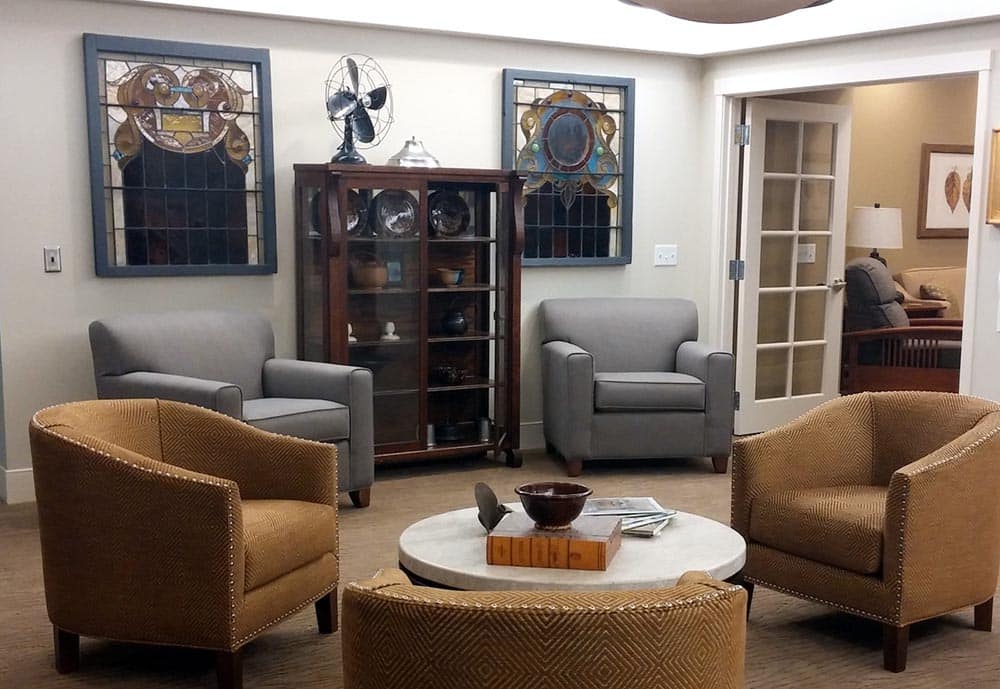It Would Not Be Accurate To Say That Falls Are Eliminated When You Live In An Assisted Living Community, But They May Be Minimized.
A recent study by the National Institute on Aging states that one out of three individuals 65 years and older will experience a fall.
The fall risk goes up as we age. It is no wonder that a great deal of senior healthcare focuses on fall prevention.
Living at home has risks that must be overcome. Climbing stairs or carrying laundry to the basement, going outside to get the mail or trying to shovel snow are serious opportunities to experience a fall.
Even though families may insist that their loved one no longer use the stairs or shovel snow, it is almost impossible to monitor such behavior. In addition, Elders want to stay active and independent.
Usually, we think of a simple trip and fall or accident, but scientists have linked several personal risk factors to falling, including muscle weakness, problems with balance and gait, and blood pressure that drops too much when you get up from lying down or sitting (called postural hypotension).
Foot problems that cause pain and unsafe footwear, like backless shoes or high heels, can also increase the risk of falling.
Some medications have side effects of dizziness or confusion that add to fall risk.
Falls Are A Serious Health Risk For The Elderly Population No Matter Where You Live, But There Are Benefits That Will Minimize Fall Risk When Living In An Assisted Living Community.
Assisted Living Communities have precautionary measures in place every day to lower the risk of a fall. First of all, there should be no stairs to navigate.
Hallways and living areas are kept clear of throw rugs and other obstacles that might be stumbling blocks.
Laundry and food preparation are provided services. All maintenance inside and out is taken care of.
There are care providers present to help those who need assistance with transferring from place to place. For those who have trouble getting out of a chair, they will be assisted by staff.
At the Piper Assisted Living all residents are given call buttons to get help with transfers so that no one is left stranded alone needing help.
Details that you might not think of like dining room chairs that do not have wheels are important. Furniture that is high enough and has straight arms make it easier to stand up and down.
Although residents may decorate their private apartments any way they chose, staff member cautions them about decorative rugs and other items on the floor. Staff can help pick up newspapers and other items dropped on the floor.
What Happens When There Is A Fall In Assisted Living Or Memory Care?
The biggest and most significant difference between a fall at home vs. in Assisted Living is help is right there. If the resident is able to use the call button they can summon help immediately. If there is a need for an ambulance then the time lapse between injury and help is shortened significantly.
Even if they cannot use the call light, we check on residents regularly so that a resident who has fallen in their apartment will be discovered much more quickly than if they were alone at home.
As Reported By The National Center For Disease Control Falls Are The Leading Cause Of Injury And Death In Older Americans.
Today physicians ask if you’ve had a fall within the last year. These details are important like other statistics such as blood pressure, cholesterol, and general overall health issues.
Preventing falls is everyone’s business. Understanding the serious repercussions is vital to our health and welfare.
If your loved one has fallen recently it may be time to consider Assisted Living in Kansas City. Schedule a tour at The Piper today.

